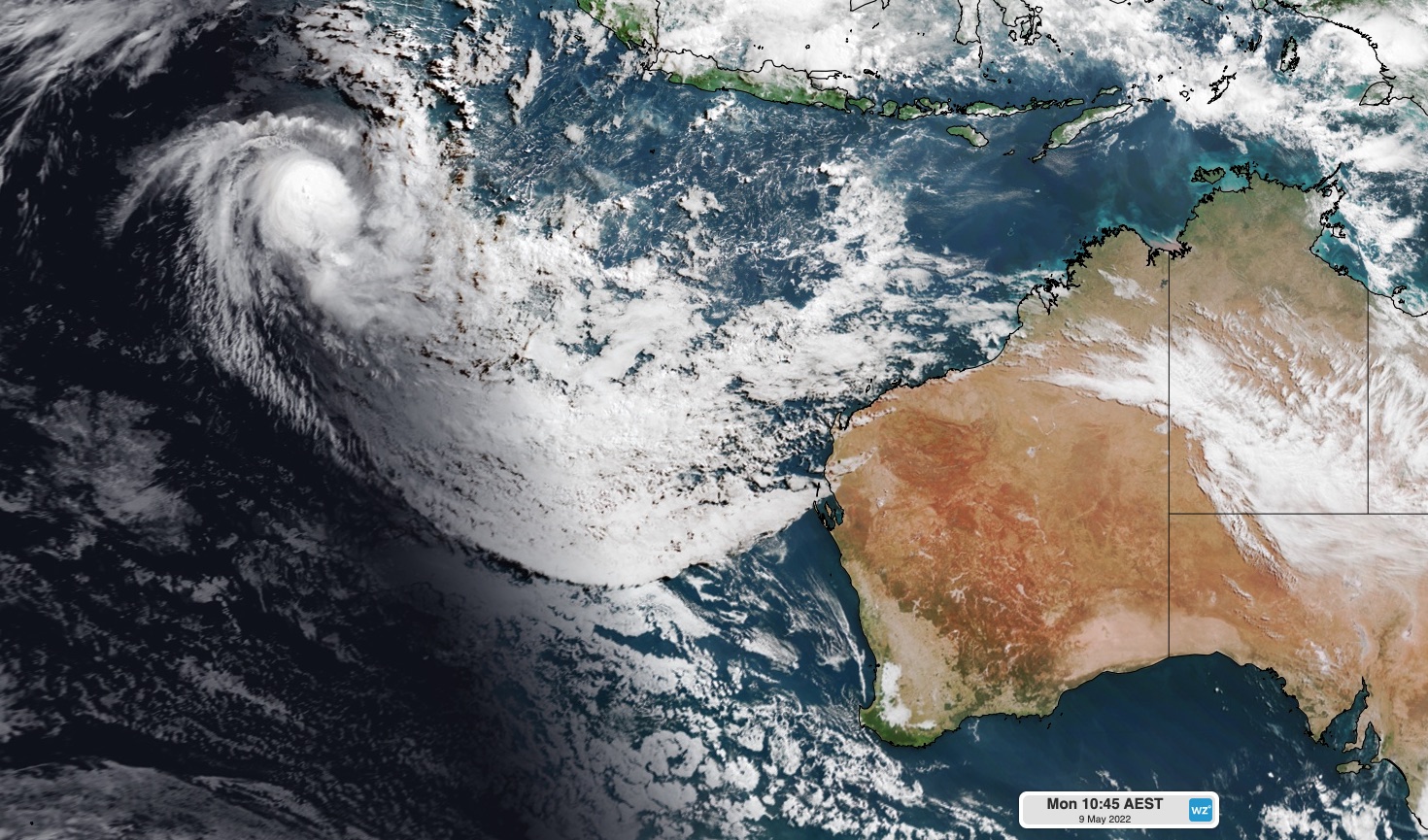A late-season tropical cyclone over the Indian Ocean will fuel rainfall over southwestern Australia later this week.
Australia’s tropical cyclone season officially ended more than a week ago April 30th. However, unusually warm water over the eastern Indian Ocean has helped spawn an out-of-season tropical cyclone just inside the western boundary of Australia’s area of responsibility.
Tropical cyclone Karim developed well to the northwest of WA on the weekend and strengthened into a category two system overnight. At 2am AWST on Monday, Karim was located 700 km west of Cocos Island.
Image: The sun rises over Tropical Cyclone Karim on Monday morning.
Fortunately, Tropical Cyclone Karin is expected to move south and gradually weaken over the next few days, staying well away from the Cocos (keeling) Islands and mainland Australia.
However, tropical moisture associated with the weakening cyclone will drift south and bring rain to southwestern Australia on Thursday and Friday.
Showers will start to increase over the west coast of WA from late Wednesday, before rain becomes heavier and more widespread on Thursday into Friday.
The map below shows how much rain one computer model is predicting by Friday night.
Image: Forecast accumulated rain between Monday and Friday this week, according to the ECMWF-HRES model.
Tropical Cyclone Karim is the 10th tropical cyclone to move through the Australian region since the start of the 2021/22 tropical cyclone season in November 2021. For more information on Weatherzone’s tropical cyclone services, please contact us at apac.sales@dtn.com.








